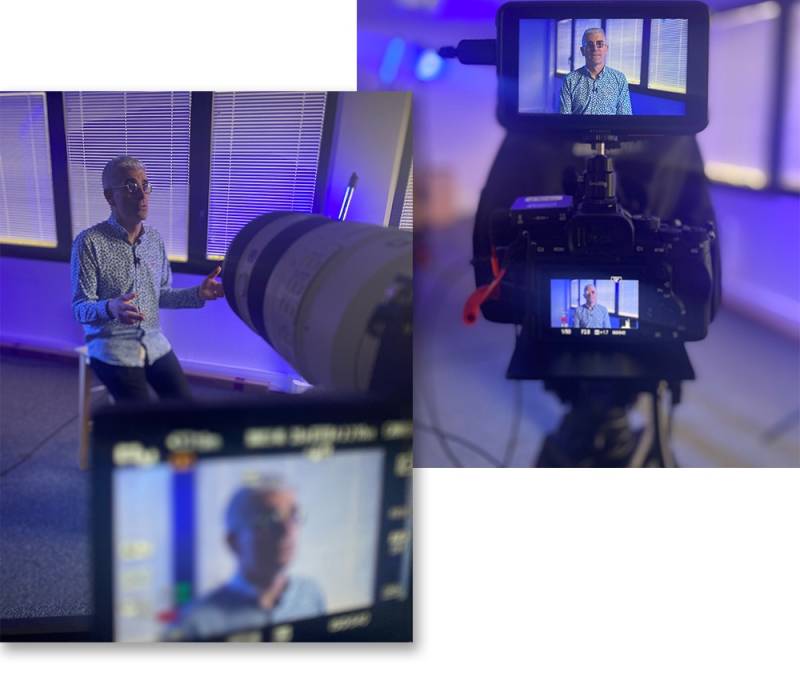Broadcast Sector in Transition: How Video Over IP Enhance Broadcast Workflows

Eric Deniau, SVP of R&D at Vitec.
The broadcast sector not only faces competition from other broadcasters, but also increasing competition from streaming providers with lower operational costs – and simpler distribution mechanisms – through internet protocol-based infrastructure.
It is an important context because broadcasters operate in a very fragmented environment. Some have fully embraced emerging technologies – such as advanced compression standards, analytics, and automated workflows, but that’s not a majority.
This hybrid environment creates a lot of complexity. Forward and backward compatibility is critical. It means that, as an industry, we must remain diligent in ensuring that workflows and standards continue to work for legacy operations while creating a bridge for broadcasters to get up and running on these new IP-based technologies and processes.
The implications are significant. Integrating new workflows over years of legacy practices has ripple effects that impact the very foundations of established industry practices.
Emerging technologies challenging legacy operations
Several technological developments over the past half-decade have led to an increased application and viability of high-quality internet protocol production and distribution processes.
Moreover, advanced compression standards have continued to create gains of about 50% in asset file-size efficiency every 7 years. This combined with increased internal network capacity – with 10-gigabit networks now becoming the market standard – is democratizing the distribution of compressed and uncompressed video feeds in large organizations across the board. This is good news for broadcasters, but it also reduces the barriers to entry for over-the-top providers.
Advances in low latency encoding/decoding and efficient routing algorithms have reduced screen-to-screen latency to the frame level – even over standard IP networks.
We have also seen the emergence of new protocols that allow the delivery of full broadcast-compatible data over IP networks (such as SMPTE2110). These further increase integration of production workflows with distribution mechanisms. By leveraging the same network for full broadcast-quality video with compressed low-resolution proxies for streamlined production operations, broadcasters have an opportunity to remove costs while accelerating time-to-value.
Finally, the digital nature of video over IP makes it prime content to be processed with artificial intelligence-powered algorithms, such as pattern matching. When AI is combined with metadata, it creates powerful management tools for storage, retrieval, editing, mixing, and all sorts of computer-based processing.
Advanced management software executed on edge devices offers additional opportunities to introduce more efficient processes across the production and distribution lifecycle. It is prompting leaders to revisit video, audio, caption, geo-localization, and time code workflows.
This has laid the groundwork for the democratization and specialization of broadcast production where production managers will be able to achieve higher levels of output with lower efforts, while also developing more targeted content.
In other words, it is not enough to simply apply the technologies. Broadcasters must revisit their processes to ensure optimal efficiency from a technical and financial perspective.
How executives and IT leaders can navigate this operational transition
As internet protocols and cloud resources play a larger role in broadcast video workflows, harnessing these new technology-enabled operations will require executives and IT leaders to adapt their current strategies.
Considering the shifting trends and emerging challenges in the broadcast sector, production leaders should identify the technologies and processes that must be implemented to streamline operations.
Plus, broadcasters should consider taking specific actions to adapt to an increasingly competitive business landscape.
The first thing they will need to ensure is that their corporate IT networks are upgraded or even re-designed to handle the volume and complexity of new video applications and traffic flowing over corporate infrastructures.
Broadcasters will also need to decide on interface strategies for managing interactions between corporate and external distribution networks. This represents a large shift in conventional practices because broadcast facilities have traditionally been siloed from corporate infrastructure.
Very careful attention must be paid to the design, development, and deployment of these next generation converged corporate networks across the broadcast sector. The quality of their choices will impact the capabilities and interoperability of the entire production and distribution system.
Broadcasters will have to ensure that new organizational competencies – supported by technical talent that understands the new converged environment – are in place for sustained, future-proof success.


























